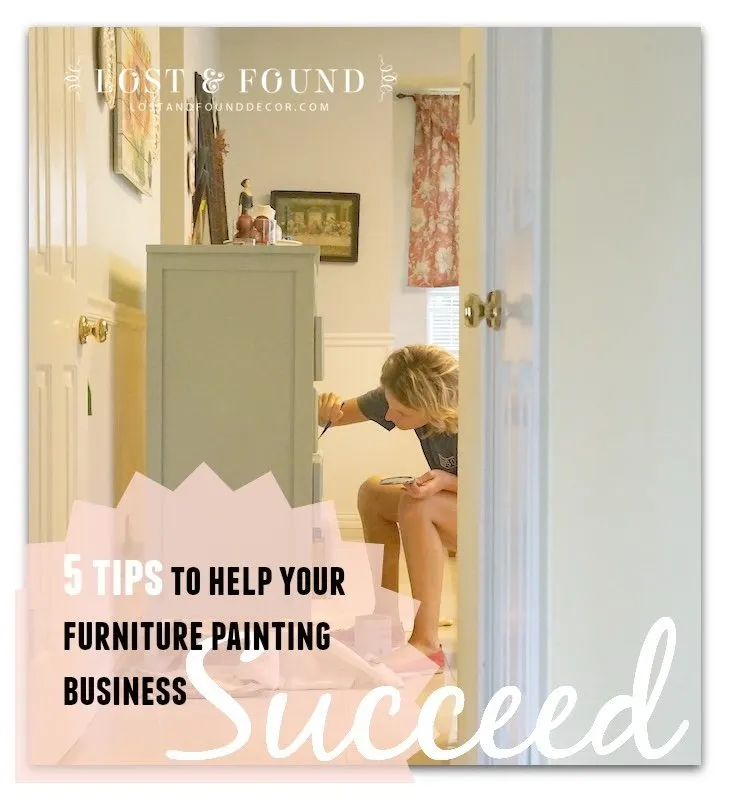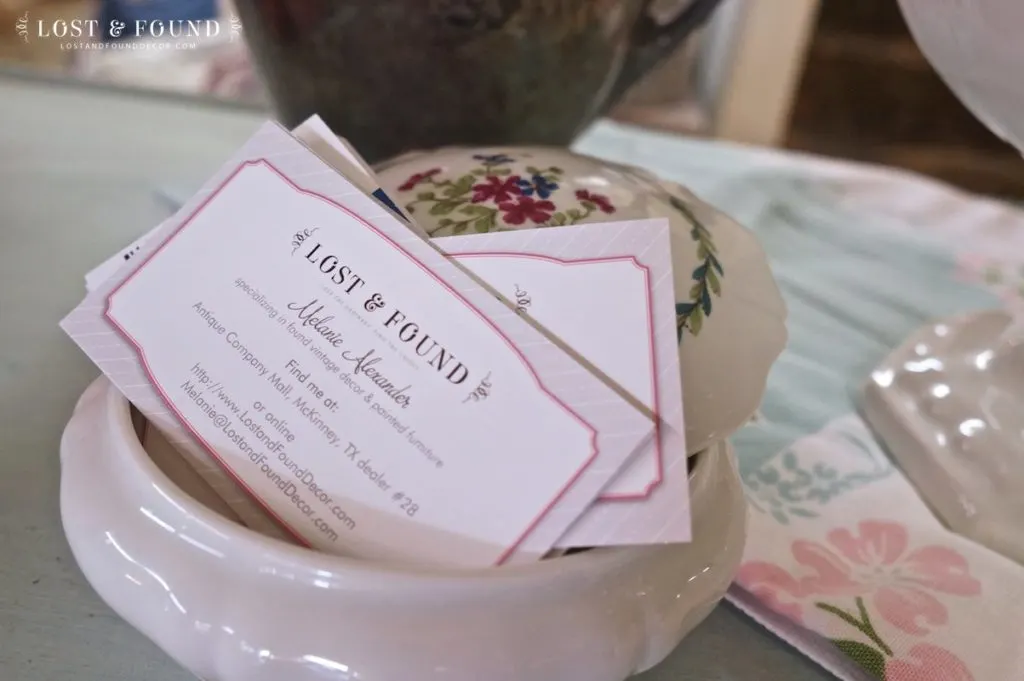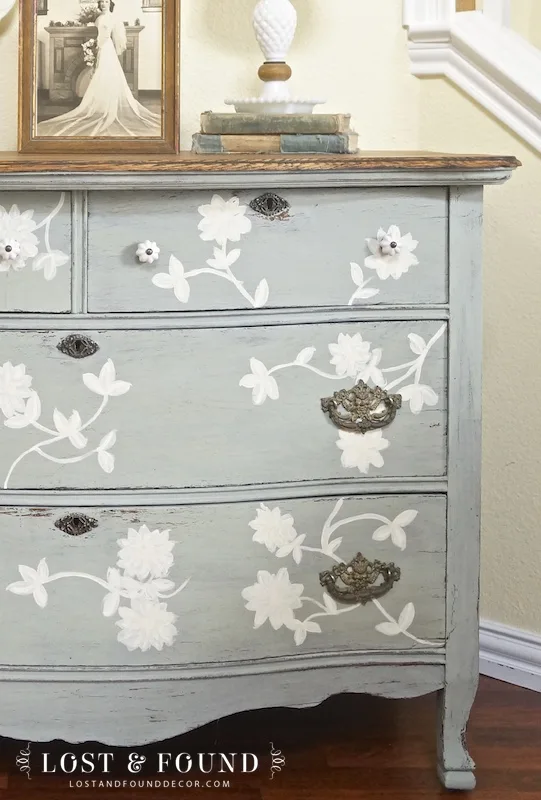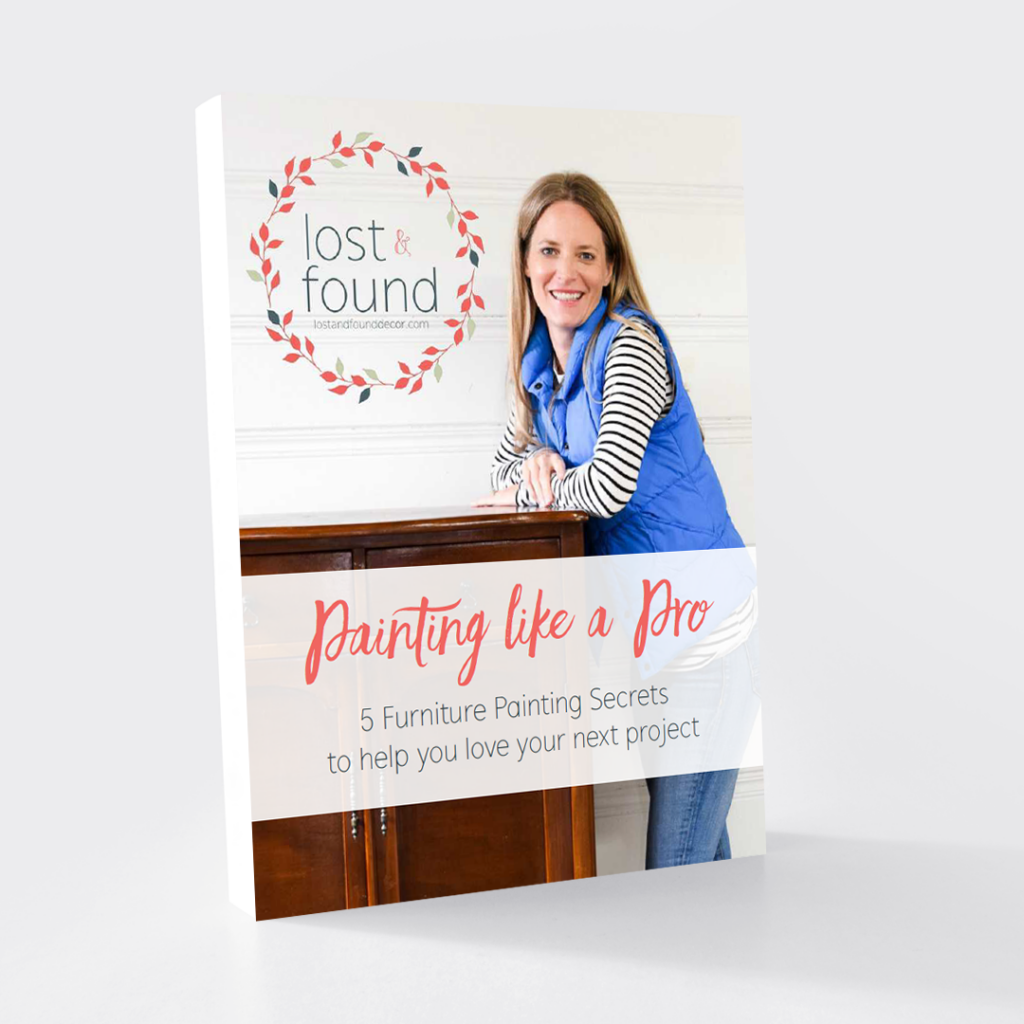The other day I was scrolling through a Facebook group board where furniture flippers from all over the North Texas area go to buy and sell their pieces, as well as ask questions and get advice from fellow flippers.
I came upon a post written by one of the more prominent group members saying that she couldn’t find a way to make selling painted furniture profitable, and so she was going to quit after two years of working hard to make her business work.
I could tell as I read her comments that she was feeling really down as her “dream” job just wasn’t going to work out for her. Many of the other group members, myself included, left her comments praising her talent and encouraging her to keep at it, I so hope that she does.
I understand her problems all too well though–older pieces are getting harder to find, the selling markets online are flooded, boutique paint products are expensive, people selling their old furnishings are now asking top dollar because they know a flipper is going to redo it and make money, and on and on!
This is a hard business to begin with, and in the past year it’s gotten even harder. There has been a flash flood of overnight entrepreneurs in the furniture painting business (I myself being one of them!) and it has become more difficult to make a name for yourself and make a decent amount of profit from your work.
Sure, painting and selling a piece here and there for fun or for a hobby is pretty easy, but I’m talking about generating regular, decent part-time level income…actually flipping furniture for profit. Is there still any room left in the furniture painting business market for new flippers? Or if you are two, three, or ten years into your business are you in danger of sinking in the current flood?
I believe that with creativity, quality, and good business sense there is still room for new furniture painters out there. For those of us already flipping, there are changes we can make to help stabilize our businesses and keep them afloat.
I am not a business expert, but I have been at this for three years now and my business continues to grow, both in size and profit.
So I want to share with you five more tips I’ve learned to make money painting furniture.

1. Find a physical place where you can sell your pieces.
Craigslist and Facebook used to be viable “virtual storefronts” for a furniture painter, but I don’t believe they are anymore. I will admit that your area may differ, but here the online markets are so filled with painted pieces that it’s almost impossible to sell anything for a decent price.
The market is just too flooded, and those online sources are only reaching the segment of your customers who are willing to hunt for the best deals.
If you want to sell your pieces quickly and for better-than-garage-sale prices, you need to be in a physical store–and make it a good one.
Look for small boutiques, or high-traffic antique malls, or even just regular well-attended flea markets. The people who shop those places are often willing to pay better prices for pieces because they aren’t generally the type scouring Craigslist for the cheapest deals. When you sell at a physical location you sell to a higher level of clientele, which means you can ask better prices.
Also, actually seeing your pieces rather than just pictures of them is what seals the deal for most customers. It’s much easier to for a customer to dismiss a digital image over a physical encounter with a piece they love.

2. Promote your brand like crazy
Do you have a business name? If not, you should get one!
Even if it’s just your actual name (Melanie Alexander Furnishings, or whatever . . .) you need to create your brand. Customers remember and connect with brands much more than with names and individuals. I have been told by several customers I’ve met that they regularly return to my space looking for new painted pieces because they know I stock those type of items. They don’t have a clue who I am or what my name is, but they see my sign “Lost & Found” and they know that’s the place with the good furniture.
By all means, print business cards! Have them available with you everywhere you go! And every time you sell a piece give a business card (or several) along with it. I actually tape a business card inside the top drawer of each piece I sell so that the customer will be able to remember and know for sure where they got it.
Look at it this way–if you don’t have a brand, then if your selling location moves, how will people know how to find you? Or if someone asks where they found that amazing piece of furniture, will your former customer have the information to share with them? I rarely remember the names of people I have hired to do work around my home, but I do remember their companies and can pass along that info to friends who need recommendations.
Word of mouth advertising is key growing your business, and for that to work effectively you must have a brand.

3. Start a blog or website
I’m asked a lot about whether or not this blog “makes me any money” . . . and the most direct answer is, not really. I do generate a little advertising income here and there, but nothing to write home about.
However, I am 100% convinced that this blog is one of the best business decisions I made! The indirect income that has come from this blog is hard to quantify, but I know it’s significant. I believe only once have I sold a furniture piece directly off of my site, but who knows how many times local people have wandered into my space and said, “that is the piece I saw online!”
Something about having high quality photos (and I emphasize high quality) of my furniture pieces online offers a validity to my work that I wouldn’t have without this blog.
Just like the joke WildStyle makes at the end of Lego Movie (stick with me here if you don’t have young kids . . .) when she says, “I’m on TV so you know you can trust me”–having my business represented by a good quality website gives it a little bit of “celebrity status,” if you get what I mean.
I know it sounds ridiculous, and honestly I feel totally ridiculous when I meet someone who reads my blog and they get a little wide eyed (like, “Ohh, I can’t believe I’m meeting this person I’ve seen pictures of online!”), but it’s true! So show off your work in a high quality way online! I promise you it won’t hurt your business, and it may help it more than you could have ever imagined.
4. Discipline your spending
One of the main issues my fellow local flipper has encountered is the increase in prices for old furniture pieces. Now that the word has gotten out that money can be made in painting old pieces, owners and dealers aren’t quite willing to sell old Aunt-Martha’s dresser that’s beaten up and missing some hardware for a bargain price anymore. But to make a decent profit in selling refinished or painted furniture, you have to buy inexpensive pieces to makeover.
Buying a piece for $150, spending $30 in materials and then 5 hours of labor on it only to sell it for $250 just doesn’t make business sense.
So if you’re a flipper, you need to get creative in where you are shopping for your makeover pieces and be more patient about waiting for a good deal to come along. You must discipline yourself to not overspend on a makeover piece just because you love it! I have written about it in a prior post, but it’s worth saying again–set a maximum price you are willing to spend for each type of piece you buy (dresser, chest of drawers, dining set, etc), and don’t go over it for any reason whatsoever. It’s ok to lose a piece here and there to another buyer, something else at a better price will come along!
5. Make sure you are producing furniture makeovers of a high quality and unique style
Is it better to redo any piece you can get your hands on so that you have a high volume of inventory? Or should you be more selective in the pieces you chose to remake?
It’s the old question of quantity vs quality . . . In my opinion I think your business will benefit more from having fewer, high quality pieces for sale rather that a bigger selection of so-so pieces.
Personally, I am pretty selective in the pieces I buy to makeover. I look for unique, well-crafted pieces that have interesting details and classic lines. If a piece of furniture is poorly designed and unattractive to begin with, painting it really won’t help. Customers aren’t shopping for any old painted piece, but rather for beautiful furnishings that are accented and updated with paint. If you keep your standards high for what pieces you makeover and stock for your customers, I believe over time they will come to trust you and see you as “the” place to go for unique and stylish furnishings.
Rather if you stock poor quality or unattractive pieces, customers will may think you are just trying to cover up bad furniture with new paint and your business will lose credibility as a high quality place to shop.
So, that means patience in your shopping! Wait for pieces to work on that are real treasures and that you can use to showcase your excellent taste and style. And once you have those pieces, do something different than what else is out there! Be creative, make your own unique style and stand out from others around you.

I hope that at least some of what I’ve shared has been helpful. I am eager to pass along any lessons that I learn along the way, and want to encourage the success of as many entrepreneurs as I can. Thank you for taking the time to read!




Kiera
Tuesday 15th of November 2016
May I ask, if you choose not to wax your pieces, what is your favorite top coat to use on chalk paint?
Melanie
Wednesday 16th of November 2016
Hi Kiera. When I use chalk paint, I do use a wax as a topcoat to seal the chalk paint. Since January of 2015 however, I have been using Fusion Mineral Paint, which is an acrylic-based paint that seals itself and doesn't need a top coat. It is not a chalk paint--really a totally different product--so I have been able to skip the wax step by using Fusion. You can ready more about the difference between chalk paint and Fusion here. Thanks for stopping in!
Vicki
Friday 24th of June 2016
I've been refinishing and selling furniture for about 2 years now. CraigsList sales have slow down (because of the saturated market) and I've been considering finding a physical location to sell. Then today I came across this article. I'm just concerned about paying rent if I have a month that very few (or no) pieces sell. Any advice?
Melanie
Saturday 25th of June 2016
Great question Vicki. Yes, I totally agree with you on the downturn in selling online. I have had very little luck on Craigslist and Facebook in the past year. If you can add more "smalls" to a rented booth space to supplement your furniture sales, I think it could be a good move for you. This post may help with some ideas. Thanks for stopping by!
Elaine
Tuesday 31st of May 2016
Love your advice Melanie. Our business is now two months old and we are already making a profit! We live in the Pocono Mountains. We converted our entire garage into a workshop showroom. your right, customers-especially repeat customers come in to see what new pieces we got in! I buy low and sell at 5 times what Im paying. My budget for dressers is no more than 30-and I have been able to do it. I hope others who are thinking of giving up dont-I love doing what Im doing. Heres our website: www.makeitnewagain.net
Melanie
Friday 3rd of June 2016
That is fantastic!! I am so happy for you Elaine, thank you for sharing your story!
Lisa
Saturday 30th of April 2016
Very interested in following you. Your tips are very helpful.
Christina
Friday 22nd of January 2016
Thank you for the wise words, Melanie! I am interested in this business, so I am trying to learn everything I can to help me decide if I want to go for it!
Melanie
Saturday 23rd of January 2016
You are so welcome Christina! Starting small and seeing how your business develops is a great way to go. Did you see my ebook I just released? It may be a helpful resource for you too.